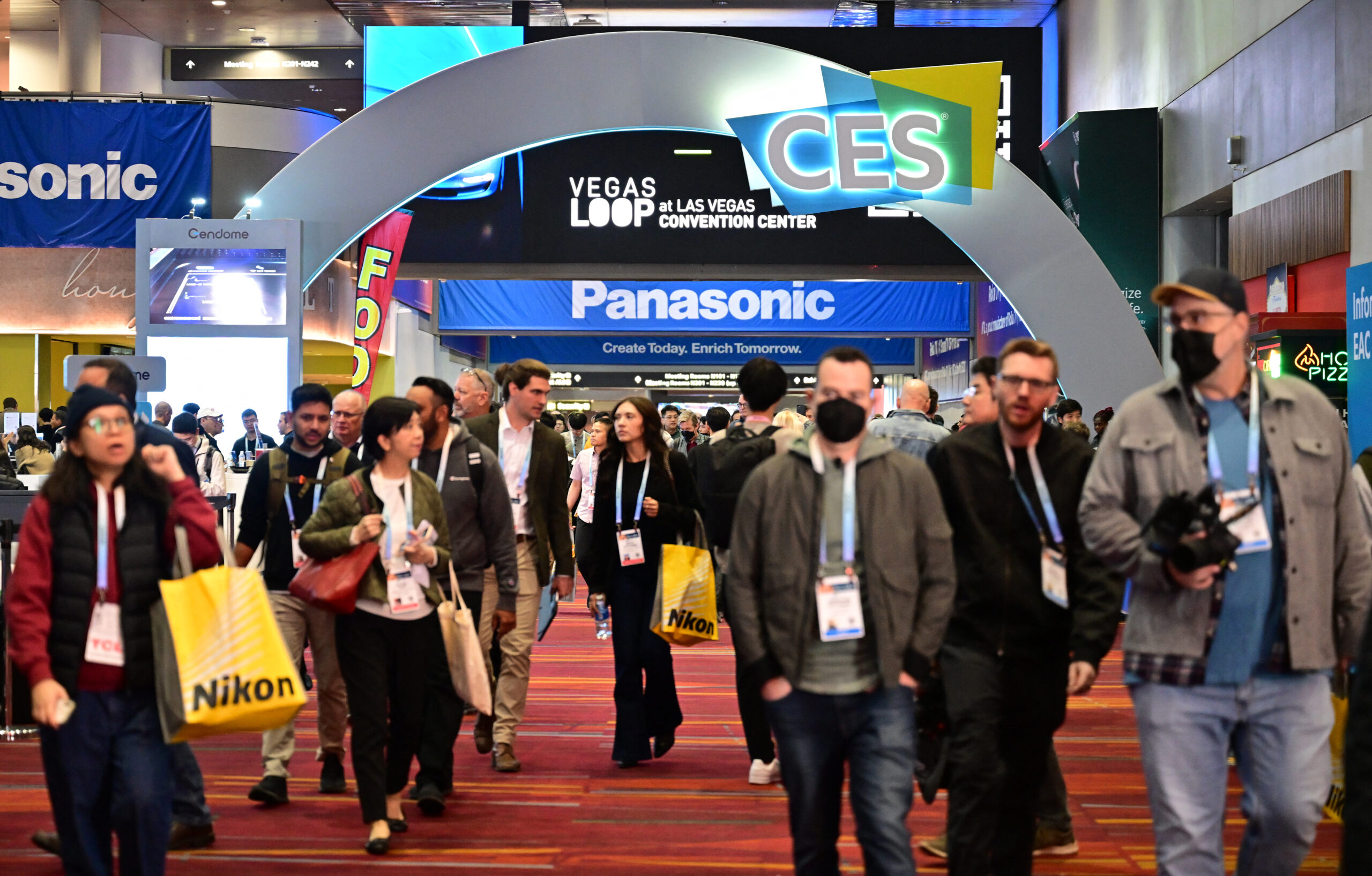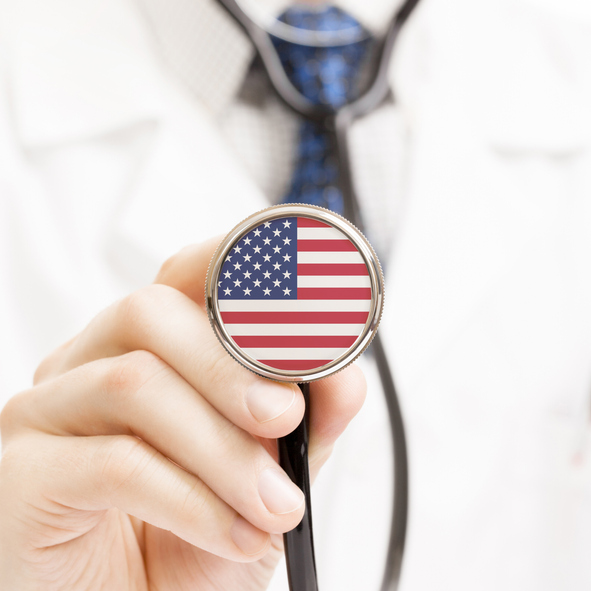The
Affordable
Care
Act’s
enhanced
tax
credits
—
which
were
introduced
during
the
pandemic
to
expand
healthcare
affordability
during
a
time
of
widespread
unemployment
—
are
at
risk
of
expiration
at
the
end
of
this
year
if
Congress
doesn’t
extend
them.
For
many
Americans,
these
expanded
subsidies
have
meant
the
difference
between
affording
routine
care
for
themselves
and
their
loved
ones
and
skipping
these
visits
entirely.
But
it’s
not
simply
a
matter
of
affordability
and
access.
This
looming
policy
change
could
also
create
significant
challenges
for
hospitals
already
battling
financial
pressures.
Healthcare
leaders
have
a
number
of
concerns
about
what
could
happen
if
Congress
does
not
renew
the
ACA’s
expanded
tax
credits.
Premiums
could
increase,
a
larger
share
of
Americans
could
become
uninsured,
hospitals
could
be
forced
into
more
bad
debt
and
uncompensated
care,
and
most
worrisome,
American
public
health
would
deteriorate.
Still,
the
hefty
price
tag
of
the
ACA’s
enhanced
tax
subsidies
makes
it
seem
unlikely
that
they
will
be
renewed
by
a
Republican-led
Congress
—
in
fact,
a
bipartisan
bill
that
was
passed
in
December
to
prevent
a
shutdown
before
Christmas
didn’t
include
it.
An
expert
interviewed
for
this
article
noted
that
these
subsidies
were
established
to
provide
support
during
a
public
health
emergency
that
has
now
expired
—
and
they
cost
taxpayers
$91
billion
last
year.
What
have
enhanced
tax
credits
meant
for
healthcare
utilization?
When
the
ACA
health
insurance
marketplaces
launched
in
2014,
tax
credits
went
into
effect
to
make
coverage
more
affordable
for
individuals
and
families.
These
tax
credits
—
which
are
based
on
ACA
shoppers’
income
and
household
size
—
were
later
expanded
temporarily
under
the
American
Rescue
Plan
Act
in
2021
and
extended
through
the
Inflation
Reduction
Act
in
2022.
This
came
in
the
form
of
larger
subsidies
and
broader
eligibility
criteria.
When
the
marketplaces
were
first
established,
the
government
provided
subsidies
to
people
earning
100-400%
of
the
federal
poverty
level,
and
individual
premium
contributions
ranged
from
2.07-9.83%
of
their
income.
The
American
Rescue
Plan
Act
and
its
extension
under
the
Inflation
Reduction
Act
boosted
these
subsidies
by
lowering
premium
contributions
to
0-8.5%
of
income
and
approved
$0
premiums
for
people
earning
100–150%
of
the
federal
poverty
level.
The
changes
introduced
during
the
pandemic
also
allowed
Americans
earning
above
400%
of
the
federal
poverty
level
to
qualify
for
subsidies
if
premiums
exceeded
8.5%
of
their
income.
Char
MacDonald,
executive
vice
president
of
public
affairs
at
the
Federation
of
American
Hospitals,
noted
that
these
credits
have
played
a
key
role
in
reducing
the
country’s
uninsured
rate.
Last
year,
the
national
uninsured
rate
reached
an
all-time
low
of
7.9%.
“What
these
tax
credits
have
done
is
make
sure
that
people
have
coverage
for
all
the
services
they
need
—
not
just
coming
into
the
emergency
room,
but
also
that
they
continue
with
care
that
they
need
for
their
chronic
condition,
for
oncology
care,
for
primary
care.
That’s
where
it’s
really
critical
—
with
the
patients
that
we’re
seeing,
the
hospital
is
not
the
first
stop,
it’s
not
the
first
entry
into
the
healthcare
system,”
she
explained.
Expanded
subsidies
reduce
patients’
out-of-pocket
costs,
which
makes
them
more
likely
to
do
things
like
book
check-ups
and
preventive
care
appointments,
MacDonald
noted.
Jolene
Calla,
vice
president
of
finance
and
legal
affairs
at
HAP:
The
Hospital
and
Healthsystem
Association
of
Pennsylvania,
agreed
that
enhanced
ACA
tax
credits
are
a
major
factor
leading
patients
to
seek
preventive
care.
“We
have
seen
people
coming
to
the
hospital
more
because
they
have
coverage,
and
that
is
a
good
thing.
When
I
say
coming
to
the
hospital,
I
mean
for
things
like
preventive
care
services,
access
to
prescription
drugs,
and
getting
early
diagnosis
and
treatment
for
some
of
the
chronic
conditions
that
become
the
most
expensive
when
people
show
up
in
the
ED,”
Calla
remarked.
When
people
don’t
have
affordable
health
insurance,
they
tend
to
delay
care,
skip
primary
care
visits
and
forego
screenings,
she
pointed
out.
This
often
means
that
their
conditions
progress
into
a
less
manageable
state,
resulting
in
more
expensive
and
acute
care
episodes
down
the
road.
Why
tax
credits
“make
good
financial
sense”
for
hospitals
In
Calla’s
view,
ensuring
that
Americans
have
access
to
affordable
healthcare
coverage
“makes
good
financial
sense.”
When
people
have
coverage,
they
are
much
more
likely
to
make
check-up
appointments
to
maintain
their
health
and
visit
an
urgent
care
site
rather
than
a
high-cost
emergency
department,
she
explained.
“Just
because
you
don’t
have
coverage,
that
doesn’t
mean
you
don’t
get
sick.
These
patients
are
still
going
to
the
hospital,
and
there
is
a
cost
to
that.
That
means
the
hospital
is
going
to
end
up
paying
for
at
least
part
of
that
uncompensated
care
—
and
that
puts
financial
strain
on
the
hospital
because
they
might
get
some
of
that
back,
but
they’re
generally
not
getting
it
all
back,
so
they
have
to
absorb
that,”
Calla
declared.
That
means
hospitals
then
have
to
make
tough
decisions,
like
hiring
less
nurses
or
forgoing
new
equipment
they
may
need
to
better
serve
their
patients,
she
remarked.
She
said
that
ACA
tax
credits
—
along
with
individual
states
expanding
Medicaid
coverage
—
have
led
to
lower
rates
of
uncompensated
care
at
hospitals.
Last
year,
Pennsylvania’s
uncompensated
care
rate
dropped
to
1.39%,
Calla
noted.
“But
still,
even
at
that
percent,
that
is
$774
million
that
hospitals
are
not
getting,”
she
stated.
“Coverage
is
a
really
big
deal
for
hospitals,
and
with
the
loss
of
the
[tax
credits],
we
expect
that
the
number
of
uninsured
patients
is
going
to
rise
dramatically,
and
that’s
going
to
have
a
ripple
effect
on
costs
for
hospitals
and
the
amount
they’re
losing.”
She
noted
that
more
than
half
of
Pennsylvania
hospitals
had
negative
operating
margins
in
2023.
“It’s
really
bad
timing
for
a
really
bad
development
for
Pennsylvania
patients
and
hospitals,
if
those
[tax
credits]
were
to
go
away,”
Calla
said.
How
many
people
will
lose
coverage
if
enhanced
tax
credits
are
not
renewed?
Another
healthcare
leader
in
Pennsylvania
—
Devon
Trolley,
executive
director
of
Pennie,
the
state’s
official
health
insurance
marketplace
—
noted
that
her
organization
has
seen
a
50%
increase
in
enrollment
since
the
ACA’s
expanded
subsidies
were
introduced.
This
is
because
coverage
is
now
more
affordable
for
a
wide
variety
of
people
—
such
as
those
with
low
and
moderate
incomes,
self-employed
people,
short-term
contract
workers,
individuals
who
have
recently
lost
their
jobs.
“There’s
a
more
affordable
bridge
from
Medicaid
to
the
private
health
plans
through
the
marketplace.
There’s
also
more
options
for
people
who
are
above
400%
of
the
federal
poverty
level.
Before
this,
they
had
no
tax
credits.
When
they
say
400%
you
may
think
that’s
a
lot
of
money,
but
that’s
$60,000
per
year
for
a
single
person,
so
it’s
not
as
big
as
it
sounds.
This
is
for
people
who
really
find
full
price
coverage
to
be
very
challenging
to
afford,”
Trolley
said.
If
Congress
fails
to
renew
enhanced
ACA
subsidies,
“every
single
enrollee
through
Pennie”
—
which
is
more
than
435,000
people
—
would
be
affected,
she
declared.
On
average,
premiums
would
rise
by
81%,
Trolley
remarked.
“It
would
double,
sometimes
even
quadruple,
what
they
are
paying
for
health
coverage
right
now,”
she
said.
Trolley
said
her
main
concern
about
the
subsidies’
potential
expiration
is
that
this
would
force
thousands
of
families
in
her
state
to
make
difficult
decisions
about
whether
to
maintain
their
health
insurance
coverage.
Given
the
significant
increase
in
out-of-pocket
costs,
many
will
drop
their
plan,
which
would
reverse
the
“incredible
progress”
that’s
occurred
since
the
enhanced
tax
credits
were
put
into
place,
she
stated.
Jeremy
Nordquist,
president
of
the
Nebraska
Hospital
Association,
also
expressed
worry
that
uninsured
rates
would
increase
significantly
if
expanded
subsidies
are
not
renewed.
He
noted
that
about
120,000
Nebraskans
have
health
coverage
through
its
state
marketplace,
and
“pretty
much
all
of
them”
are
receiving
enhanced
tax
credits.
He
also
said
that
enrollment
in
the
state’s
marketplace
plans
has
increased
by
about
a
third
since
the
subsidies
were
upgraded
through
the
Inflation
Reduction
Act.
“The
generous
subsidies
help
reduce
the
average
premium
for
those
that
are
receiving
subsidies
by
about
50%,
obviously
more
on
the
lower
income
side
than
higher,
but
there’s
a
big
impact
to
those
individuals
getting
coverage.
Without
them,
we
know
more
Nebraskans
are
likely
to
skip
buying
coverage
and
would
remain
uninsured,”
Nordquist
declared.
If
Congress
does
not
renew
the
ACA’s
expanded
tax
credits,
the
nation’s
number
of
uninsured
citizens
would
rise
by
3.8
million
each
year
on
average
from
2026
through
2034,
according
to
estimates
from
the
Congressional
Budget
Office.
The
agency
predicted
that
gross
benchmark
premiums
would
increase
by
7.9%
on
average
over
the
same
period.
MacDonald
of
the
Federation
of
American
Hospitals
pointed
out
that
robust
enrollment
in
ACA
plans
benefits
the
risk
pool.
The
more
people
enrolled
in
the
marketplace,
the
healthier
the
risk
pool
is,
which
brings
down
premiums
for
everybody,
she
stated.
“If
we
see
the
tax
credits
expire
and
people
are
unable
to
obtain
insurance,
you’re
going
to
see
only
the
sickest
patients
enrolling,
and
that’s
problematic
for
the
risk
pool.
That
means
the
premiums
are
higher
for
everyone
else,
and
it
just
has
an
effect
that
will
continue
and
will
be
negative
for
everyone
out
there,”
MacDonald
explained.
How
would
rural
hospitals
fare
if
enhanced
tax
credits
go
away?
Nordquist
of
the
Nebraska
Hospital
Association
noted
that
the
elimination
of
enhanced
ACA
subsidies
“would
be
really
disastrous”
for
rural
communities
in
particular.
Rural
areas
tend
to
have
a
higher
percentage
of
people
who
are
self-employed
or
employed
by
small
businesses
—
oftentimes
working
in
agriculture
or
trades
like
woodworking
and
blacksmithing,
he
said.
He
also
pointed
out
that
rural
hospitals
operate
on
extremely
tight
operating
margins.
This
is
due
to
a
number
of
factors,
such
as
lower
patient
volumes
and
limited
access
to
specialized
services
that
generate
higher
revenue.
“If
you
now
have
a
10%
uninsured
rate
in
your
community,
as
opposed
to
a
5%
uninsured
rate
or
even
lower,
it
really
makes
the
path
hard
to
figure
out
how
to
break
even
at
the
end
of
the
day,”
Nordquist
declared.
Brock
Slobach,
COO
of
the
National
Rural
Health
Association,
pointed
out
that
about
half
of
rural
hospitals
are
losing
money
on
operations.
He
said
this
share
will
grow
significantly
if
expanded
ACA
tax
credits
are
not
renewed,
which
could
force
some
hospitals
to
close
their
doors.
“About
460
rural
hospitals
are
in
danger
of
closing,
according
to
our
statistics,
and
216
of
those
are
highly
vulnerable
to
closure.
So
something
like
this,
for
those
216
highly
vulnerable
hospitals
to
closure,
could
really
produce
some
significant
negative
impact,”
Slobach
remarked.
What
might
some
of
the
downstream
effects
be?
If
enhanced
subsidies
are
not
renewed,
the
negative
impacts
will
be
both
immediate
and
long-term,
Trolley
of
Pennie
pointed
out.
She
highlighted
the
fact
that
about
a
quarter
of
the
U.S.
population
is
between
the
ages
of
45
and
64.
Many
people
in
this
pre-Medicare
age
range
are
early
retirees
or
people
who
have
switched
to
lower-stress
jobs
that
may
not
offer
health
insurance,
she
noted.
Without
affordable
ACA
options,
many
of
these
people
may
opt
to
go
insured
and
wait
until
they
are
eligible
for
Medicare,
Trolley
explained.
“There’s
a
lot
of
focus
on
how
to
make
Medicare
more
effective
and
how
to
curb
some
of
the
cost
increases
there.
If
you
have
people
who
are
uninsured
for
five
years
before
they
hit
Medicare
and
they
haven’t
gotten
preventive
care
or
maintenance
care
for
things
like
diabetes
or
heart
conditions,
they’re
going
to
hit
Medicare
with
unmanaged
chronic
or
serious
conditions
that
are
going
to
cost
a
lot
more
at
that
stage
to
treat
than
if
they
had
gotten
in
early
and
been
able
to
have
that
ongoing
access,”
she
declared.
The
expiration
of
tax
credits
might
also
lead
to
a
renewed
focus
on
price
transparency,
said
Josh
Berlin,
CEO
of
rule
of
three,
a
healthcare
consulting
firm.
The
failure
to
renew
these
subsidies
will
make
healthcare
access
even
more
unaffordable,
which
could
ignite
greater
fervor
around
efforts
to
present
pricing
information
transparently,
he
noted.
“You
might
see
a
reemergence
or
doubling
down
of
the
transparency
requirements,
with
some
political
support
and
maybe
even
bipartisan
support,
that
could
provide
an
emphasis
on
the
way
costs
are
transparently
pushed
out
in
and
across
the
health
system,”
Berlin
stated.
How
likely
is
it
that
Congress
will
renew
the
enhanced
tax
credits?
Last
month,
Congress
passed
a
stopgap
funding
bill
that
included
some
healthcare
provisions,
such
as
extensions
for
Medicare
telehealth
flexibilities
and
the
Acute
Hospital
Care
at
Home
program
—
but
it
did
not
extend
the
ACA’s
enhanced
tax
credits.
In
an
interview
—
before
the
stopgap
bill
was
introduced
minus
the
tax
credits
extension
—
Michael
Abrams,
managing
partner
of
Numerof
&
Associates,
predicted
that
it
is
not
likely
that
Congress
would
extend
the
subsidies.
“Republicans
have
an
issue
with
the
legislation
in
the
sense
that
they
believe
that
the
subsidies
distort
the
use
of
the
program
by
extending
it
to
people
who
don’t
need
it.
Now,
that
may
not
have
been
true
during
the
pandemic,
but
the
question
is,
is
it
still
true
now?”
he
remarked.
The
ACA
subsidies
were
expanded
during
the
pandemic
—
a
time
when
many
Americans
unexpectedly
lost
their
jobs,
Abrams
pointed
out.
Now,
the
U.S.
unemployment
rate
is
4.2%,
which
is
“about
as
close
to
full
employment
as
we’re
going
to
get,”
he
said.
In
Abrams’
view,
Congress
will
probably
use
this
logic:
tax
credits
were
expanded
in
response
to
a
public
emergency,
and
now
that
that
emergency
is
over,
it’s
time
to
wind
these
credits
down.
“The
ACA
itself
should
not
be
competing
with
alternatives
that
are
available
to
individuals
through
employment,”
he
declared.
“It’s
hard
to,
I
think,
justify
the
continuation
of
a
program
that
was
a
Band-Aid
for
a
particular
point
in
time.”
He
also
pointed
out
that
“too
many
people”
are
focused
on
the
fact
that
enhanced
tax
credits
have
increased
ACA
enrollment.
“For
them,
more
enrollment
in
the
ACA
is
an
end
in
and
of
itself,
but
it
shouldn’t
be.
The
ACA
is
a
safety
net
kind
of
program,
and
not
that
there
is
no
place
for
it,
but
whether
it
thrives
or
not
is
really
a
measure
of
strength
of
our
economy.
And
if
the
economy
is
getting
stronger,
it’s
only
logical
that
the
use
of
the
safety
net
program
shrinks,”
Abrams
explained.
If
Congress
takes
this
stance,
“there
is
no
question”
that
hospitals
will
suffer
negative
financial
consequences,
which
is
why
both
hospital
and
commercial
insurance
lobbies
are
working
hard
to
keep
enhanced
subsidies
alive,
he
said.
But
at
the
end
of
the
day,
he
has
serious
doubts
their
efforts
will
be
successful.
Photo:
Niyazz,
Getty
Images
 Olga
Olga













